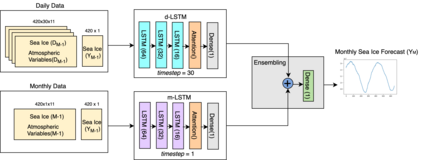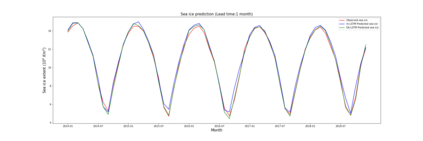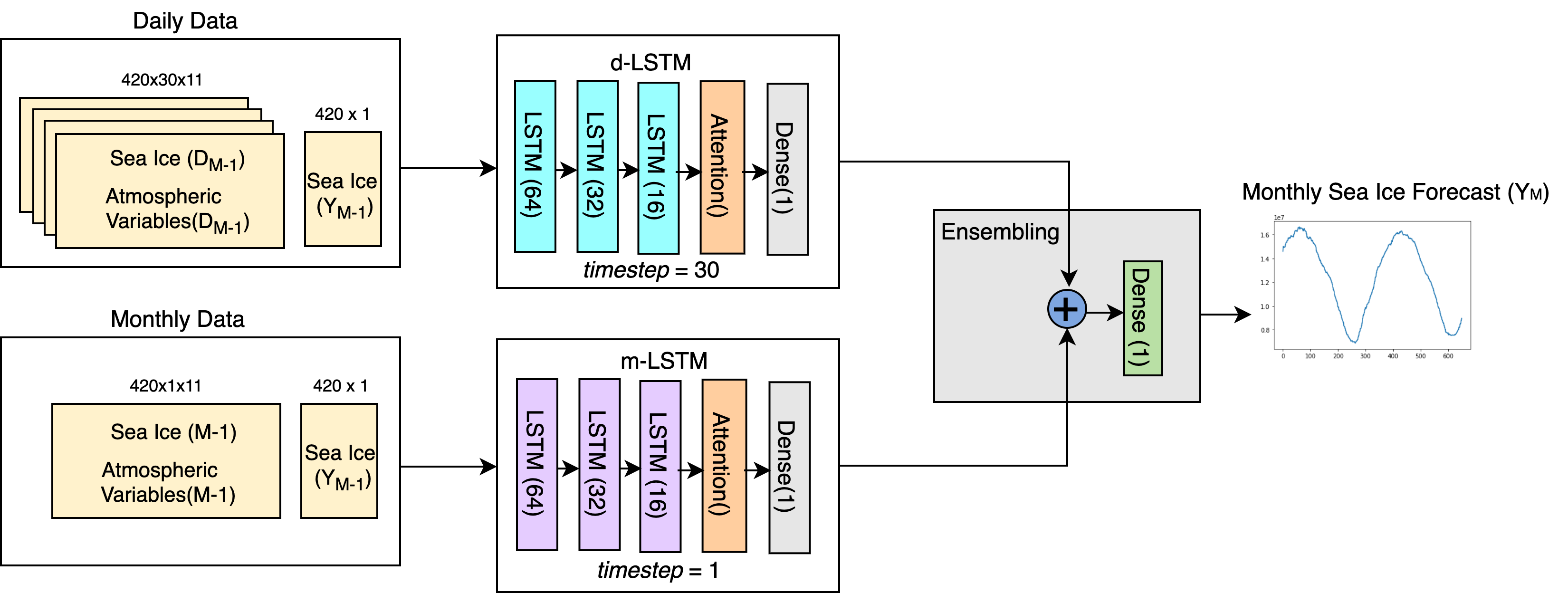Accurately forecasting Arctic sea ice from subseasonal to seasonal scales has been a major scientific effort with fundamental challenges at play. In addition to physics-based earth system models, researchers have been applying multiple statistical and machine learning models for sea ice forecasting. Looking at the potential of data-driven sea ice forecasting, we propose an attention-based Long Short Term Memory (LSTM) ensemble method to predict monthly sea ice extent up to 1 month ahead. Using daily and monthly satellite retrieved sea ice data from NSIDC and atmospheric and oceanic variables from ERA5 reanalysis product for 39 years, we show that our multi-temporal ensemble method outperforms several baseline and recently proposed deep learning models. This will substantially improve our ability in predicting future Arctic sea ice changes, which is fundamental for forecasting transporting routes, resource development, coastal erosion, threats to Arctic coastal communities and wildlife.
翻译:准确预测从亚季节到季节的北极海冰是一项重大的科学努力,其根本挑战在起作用。除了基于物理学的地球系统模型外,研究人员一直在应用多种统计和机器学习模型来进行海冰预报。看数据驱动海冰预报的潜力,我们建议采用基于关注的长期短期记忆(LSTM)共聚法来预测每月海冰的程度,直至未来1个月。我们利用从NSIDC检索到的海冰数据以及从ERA5再分析产品中采集的大气和海洋变量的每日和月度卫星数据,显示39年来我们的多时共振方法超越了几个基线和最近提议的深层学习模型。这将大大提高我们预测未来北极海冰变化的能力,这对预测运输路线、资源开发、海岸侵蚀、北极沿海社区的威胁和野生动物至关重要。







